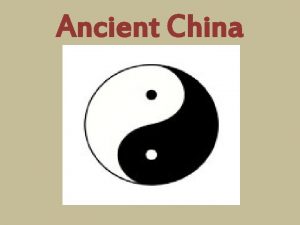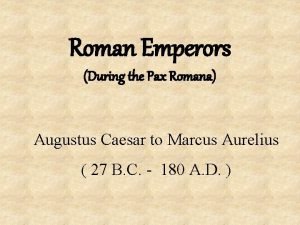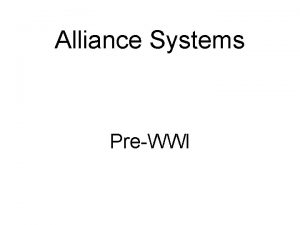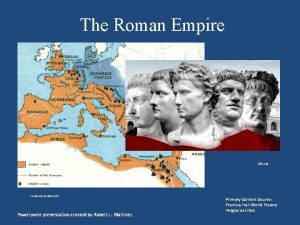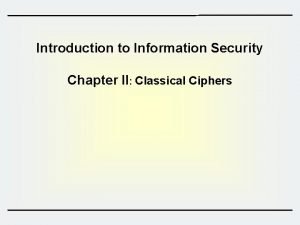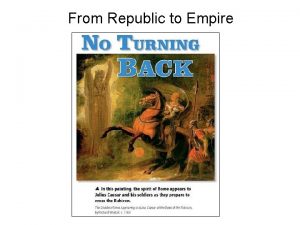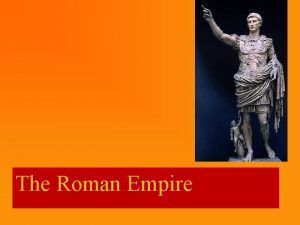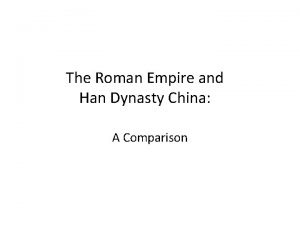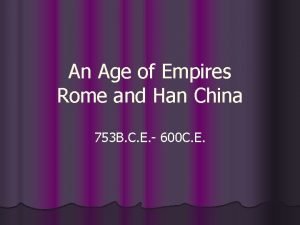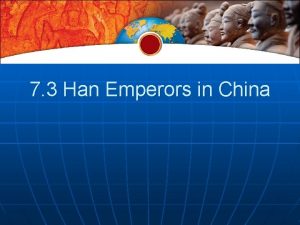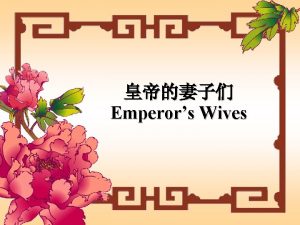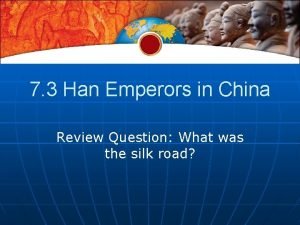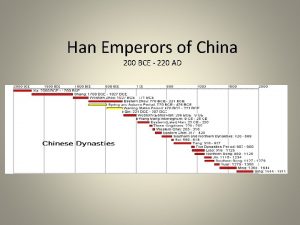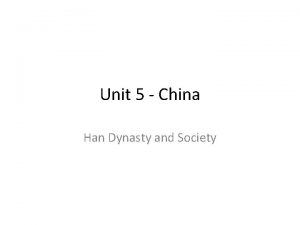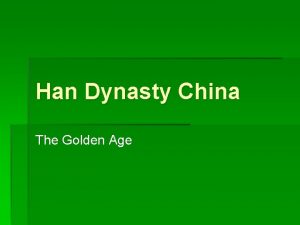7 3 Han Emperors in China The Han














- Slides: 14

7. 3 Han Emperors in China

The Han Restore Unity in China n Troubled Empire • In the Qin Dynasty the peasants resent high taxes and harsh labor, and rebel.

The Han Restore Unity in China n Liu Bang Founds the Han Dynasty • The Han Dynasty begins about 202 B. C. and lasts about 400 years. • Han Dynasty has great influence on Chinese people and culture • establishes centralized government • lowers taxes and reduces punishments to keep people happy

Depiction of Emperor Liu Bang

The Han Restore Unity in China n defeats nomads and mountain tribes • Colonizes Manchuria, Korea, and as far south as what is now Vietnam

A Highly Structured Society n Chinese believe • emperor has authority to rule from god. • prosperity is the reward of good rule, and troubles reveal poor rule.

A Highly Structured Society n Structures of Han Government • Complex bureaucracy runs Han government • People pay taxes and supply labor and military service • Government uses peasant labor to carry out public projects

A Highly Structured Society n Confucianism, the Road to Success • bureaucracy employs 130, 000; 18 ranks of jobs • Civil service jobs—government jobs obtained through examinations. • Job applicants begin to be tested on knowledge of Confucianism • Civil service system works well, continues until 1912

Han Technology, Commerce, and Culture n Technology Revolutionizes Chinese Life • Invention of paper in A. D. 105 helps spread education • Collar harness, plow, and wheelbarrow improve farming


Han Technology, Commerce, and Culture n Agriculture Versus Commerce • As population grows, farming regarded as important activity • Government allows monopolies—control by one group over key industries • Techniques for producing silk become state secret as profits increase

Han Unifies Chinese Culture • To unify empire, Chinese government encourages assimilation • Assimilation—integrating conquered peoples into Chinese culture • Writers encourage unity by recording Chinese history


The Fall of the Han and Their Return • Economic problems and weak emperors cause political instability • In A. D. 9, Wang Mang seizes power and stabilizes empire • Wang Mang is assassinated in A. D. 23; Han soon regain control • Peace is restored. The Later Han Dynasty lasts until A. D. 220
